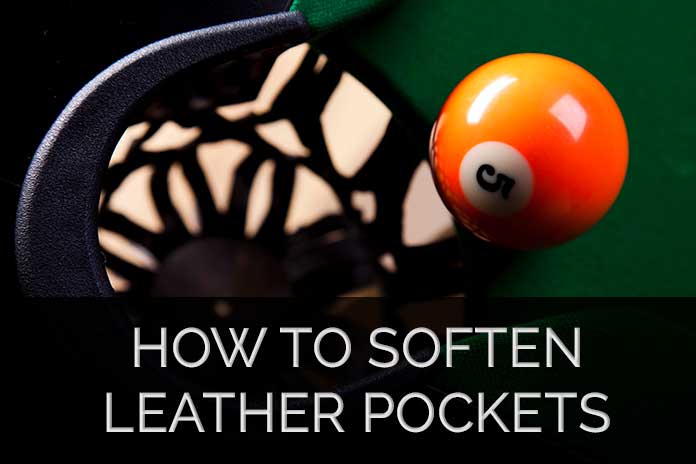Softening leather pool table pockets is an important step in maintaining the quality and performance of your pool table. Over time, the leather pockets on a pool table can become stiff and rigid, making it difficult to make clean shots and properly pocket the balls. Fortunately, softening the leather pockets is a simple process that can be done with a few basic tools and materials.
Here are the steps to soften leather pool table pockets:
- Purchases: To soften the leather pockets, you will need leather conditioner, a soft cloth, and a clean, dry workspace.
- Clean the pockets: Before applying the leather conditioner, it is important to clean the pockets to remove any dirt, dust, or other debris. Use a soft cloth to gently wipe down each pocket, taking care not to damage the leather.
- Apply the leather conditioner: Once the pockets are clean, it is time to apply the leather conditioner. Squeeze a small amount of leather conditioner onto a soft cloth, and then gently rub the conditioner into the leather, working in small circular motions. Make sure to cover each pocket thoroughly, taking care not to miss any areas.
- Let the conditioner soak in: After you have applied the leather conditioner, let it soak into the leather for at least 10-15 minutes. This will allow the conditioner to penetrate the leather, making it softer and more pliable.
- Buff the leather: After the leather has had time to soak in the conditioner, use a soft cloth to gently buff the leather, removing any excess conditioner. Be sure to buff the leather until it is smooth and free of any streaks or residue.
- Test the pockets: Once you have completed the softening process, it is important to test the pockets to make sure that they are properly conditioned. Take a few shots and see how the balls are pocketing. If the pockets are still too stiff, you may need to repeat the conditioning process.
- POWERFUL LEATHER CONDITIONER: Leather Honey penetrates deep to protect new leather and rejuvenate dry leather and old leather. This non-toxic leather conditioner has no silicone, solvents or animal products. Not sticky and completely odorless. Protect leather all year long from snow & rain with our water-repellant formula!
- RESTORE ALL TYPES/COLORS OF LEATHER: Soften leather furniture, moisturize leather car interiors & promote flexibility in your favorite leather belt or leather shoes. Great for upholstery, truck seats, motorcycle leather, boots, gloves, purses, jackets, saddles & tack! Not for use on suede, faux leather or vinyl.
- FAMILY-OWNED, AMERICAN-MADE, SPECIALLY FORMULATED: For over 50 years, we have been making the best leather care products, including Leather Honey Leather Conditioner, the #1 best-selling leather care product on Amazon. Use our leather conditioner with Leather Honey Leather Cleaner, also an Amazon best-seller!
It is also important to note that you should use a high-quality leather conditioner that is specifically designed for use on pool table pockets. This will help to protect the leather and keep it in good condition, preventing it from becoming stiff or brittle over time.
How to tell if your Pool Table Pockets are Leather?
- Inspect stitching: Leather pockets are often sewn together using a stitch pattern that is visible on the outside of the pocket.
- Check the texture: Leather has a distinctive texture that is smooth and supple to the touch. If the pockets have a rough or synthetic feel, they are more than likely made from a faux or PU leather.
- Check the color: Leather pockets are often a natural tan color, whereas synthetic pockets may be a uniform black or other color.
- Inspect the edges: The edges of leather pockets are often finished with a rolled or turned seam, whereas faux or synthetic pockets may have a flat edge that is sealed with a strip of vinyl or plastic.
- Smell the pockets: Leather has a very distinctive smell that is often described as a mixture of leather and oil. If the pockets have a strong, synthetic odor, they are likely made from PU.
Alternate Options for Pool Table Pockets
Replacing the leather of Pool Table Pockets is a trickier process. If you find that if softening the leather doesn’t produce an adequate result, replacing them should be your next course of action.
Final Thoughts
Softening leather pockets on your pool table is a simple and straightforward process and can be done with a few basic tools. Following these steps and cleaning your pool balls regularly, you can maintain the quality and performance of your pool table, ensuring that you can enjoy your man cave investment for years to come.


